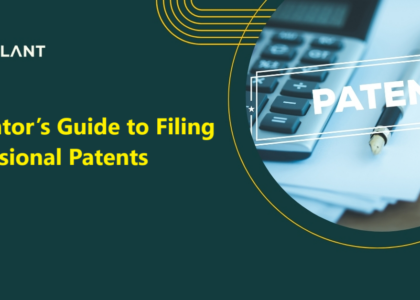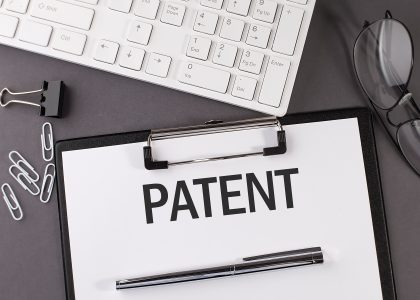

Does a Provisional Patent Application Provide Foreign Patent Protection?
The provisional patent application is a unique aspect of the U.S. patent system that is sometimes misunderstood. While submitting provisional patent applications may be a cost-effective approach to ensure an early filing date, they must be crafted with considerable caution to reap the benefits. Provisional applications are important parts of a larger patent strategy. Still, the form and substance of the application should be adapted to suit specific goals in light of the circumstances surrounding the filing decision.
Before discussing filing tactics, it’s important to understand how the USPTO came to offer the provisional patent application option in the first place. The provisional patent application method was implemented in 1995 in connection with a change in patent terms. When the term of a patent issued from a normal, non-provisional application was modified from 17 years from issuance to 20 years from the effective filing date, U.S. inventors were put at a disadvantage since they needed to get a foreign filing license before filing overseas. Filing a U.S. patent application was the most typical technique for U.S. inventors to get foreign filing permission. However, under the existing patent system, the patent period begins when an application is filed. As a result, non-U.S. inventors might get an early priority date by filing in their home country, but the term of their future U.S. patent would be determined by the U.S. filing date rather than the foreign priority date. The provisional patent application was created to help U.S. innovators overcome this disadvantage by securing an early filing date without extending the patent period.
The lower formal requirements for the application itself are a popular aspect of provisional patent applications. According to the Act creating provisional patent applications, a provisional patent application must include a specification and a drawing, 35 U.S.C. 111(b). A claim is not required, which is unlike a conventional patent application. This is the case because the provisional application isn’t assessed for patentability. Because of the fewer formal requirements and the lack of substantive examination, provisional patent applications can take many different forms, ranging from engineering notes and sketches that bear little resemblance to a patent application to fully prepared, formal documents that meet all of the requirements for a regular, non-provisional application.
While the lower formal requirements may appeal to candidates trying to save money, there is a catch. The provisional application must properly define and enable the subject matter of the claims in the later-filed, non-provisional application to claim the advantage of the provisional application’s early filing date. The subject matter asserted in the non-provisional application must be specified sufficiently in the provisional application. On a claim-by-claim basis, it is established whether the provisional filing date applies. Any references with effective publication dates in the interval between the filing dates of the provisional and non-provisional applications might be regarded as prior art concerning that claim if the provisional application does not fully support it. In many ways, the true value of a provisional patent application is how well it supports the claims filed in the succeeding non-provisional application.
To satisfy one or more of the benefits offered by a temporary application, an effective plan includes expenses, filing requirements, and practical factors. Three frequent scenarios are as follows.
In one case, the novel subject matter is still under development in a highly competitive field, making an early filing date extremely advantageous. The creative process usually starts with broad goals in mind. As the project advances, design challenges arise and are handled, culminating in a commercial embodiment. Throughout this process, provisional applications may be submitted to capture snapshots of this shifting objective, each with appropriate claims for the present scope of the invention. If the design changes rapidly (within a year), a single non-provisional application can be made to claim the benefit of all provisional applications. Suppose the project takes more than a year to complete. In that case, a series of non-provisional applications can be filed, with the caveat that the claims of the second and subsequent non-provisional applications must patentably distinguish the subject matter disclosed in the first provisional and non-provisional applications. To guarantee that the claims of the later-filed non-provisional patent application(s) are properly supported, it is highly advised that each provisional application be drafted as a complete, formal application satisfying all of the criteria of a regular patent application.
A tightly controlled application filing technique may optimize the patent term in a second example when the innovative technology is pretty well developed and projected to have a long commercial life. In this situation, a complete application with a full claim set that meets all of the standards for a non-provisional application is initially filed as a provisional application. A normal patent application is filed after a defined and relatively short period, such as two months, claiming the benefit of the provisional application. The applicant can get a foreign filing license using this technique without starting the patent term clock in the United States.
Finally, an accelerated application may be required when there is insufficient time to prepare a comprehensive and formal patent application. Still, an early filing date is required to safeguard international filing rights. This scenario may develop when the necessity for a patent application is discovered late, such as right before a publication, presentation, or product launch. When there isn’t enough time to produce a comprehensive application, a description of the invention, a well-thought-out claim set, and any accessible drawings or sketches representing the inventive subject matter should be developed and submitted. Given the tight timeline, this strategy will provide the best possibility of supporting the later claims by drafting claims using language that is likely to be utilized in ordinary patent applications. To limit the chance of intervening art or conduct occurring between the provisional and non-provisional application filing dates that might impair patent rights, a full non-provisional application should be developed and filed as soon as feasible following the provisional application.
There is no one-size-fits-all solution for crafting interim applications. Regardless of the filing strategy, the provisional application should include at least one carefully crafted independent claim and as many dependent claims as necessary to cover alternative embodiments or secondary features so that the claims of the later-filed regular application will benefit from the provisional application filing date.








